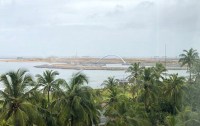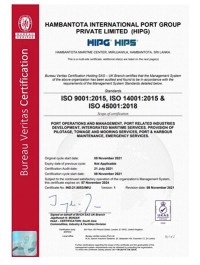Are China’s Belt And Road Investments Slowing Down?
Billions of dollars of new investment are still going into the BRI – it’s just not going into construction. However its good news for tech investors
An interesting, well researched article by the Global Construction Review, titled “Investment Slows As China Tightens Its Belt & Road Initiative” has just been published, citing ‘data from multiple sources’ showing a substantial drop in lending from China into BRI projects in road, rail and energy. That was based on intelligence from Green FDC, who study the initiative and who stated that such lending has fallen by 54% the past year.
Within the report, Baker and Mackenzie were quoted as saying that Chinese infrastructure lending to Africa fell from US$11 billion in 2017 to US$3.3 billion in 2020. Overall, according to the Green Finance & Development Center, BRI investment ‘continued to slide’ in the first half of 2021, decreasing by nearly US$10 billion.
Unidentified analysts were reported to have said that declines are due to two main factors: heightened risk aversion on behalf of Chinese state lenders; and a ”reluctance on the part of recipient governments to accept disadvantageous loan terms”.
The report then goes on to highlight several BRI projects in Africa that are now delayed, with an inference that either China has run out of outbound investment capital, that the debts reported to the World Bank have been massively underreported, resulting in a hidden debt of some US$385 billion and an estimated 35% of BRI projects are involved in corruption, human rights abuses, environmental hazards and public protests against the Chinese.
It is not, overall, a flattering picture. Such statements matter because if there is a ‘slowdown’ in Chinese spending – and remember this article appeared in Global Construction Review – that impacts on issues such as the price of steel, concrete and all the other commodities that go into building infrastructure – as well as opportunities for sub-contractors, engineers, architects, logistics and transportation businesses.
But is it accurate?
Well, partially yes, but mostly no.
In terms of the hidden debt, that was based on findings released last month by US Aid Data, who are part of the William & Mary University in Virginia. However, as we reported here on their findings, the data they looked at to reach their conclusions dated from 2000 to 2017, meaning a large part of it is over 20 years old and none of it applicable to China’s lending practices over the past five years. As China began the BRI in 2015, less than two years of the US Aid Data statistics are actually valid to the BRI. It is, in short, a highly dubious source and largely irrelevant to BRI lending. However, it is picked up and treated as if it were. It isn’t.
In terms of ‘debt traps’ that has also been revealed as mythical – not by the Chinese, but by John Hopkins University and Chatham House as independent sources. We covered that revelation here.
In terms of projects being delayed, and especially in Africa, this is true. However, covid has largely been responsible, and has exposed the fiscal shortcomings of numerous countries with inadequate reserves. What covid has done is delay the anticipated return on multiple BRI investments, and this has created unexpected financial challenges. The Nairobi-Naivasha Central Rift Valley railway line – what should be a sure-fire passenger revenue generating money-spinner – has been unable to operate, locked down due to Covid induced travel restrictions. Expected cashflow income has failed to materialize. That is not China’s fault, but it does have a knock-on effect in having other projects that would have been next in line, delayed. That is just fiscal stress, and nothing to do with shortcomings within BRI financing. Shit happens. Economies will recover. Delayed projects will be completed another day.
But where the assumption that Belt and Road investment is slowing really goes awry is that China is gradually reducing investments into it. That isn’t true.
But China is changing where it puts its BRI investments.
This is where the likes of Global Construction Review miss the point – they focus only on the construction aspect to the BRI. In fact, although there will be financing provided to finish off projects, much of the infrastructure build and the heavy lifting has already been done. New projects will emerge from time to time – and especially in South America – but in Asia and Africa much of what needs to have been built has already been planned for and committed too. Covid has introduced some delays, but most of the BRI construction build is done.
Take Sri Lanka, where I live. The hard part of the Colombo Port City complex has been completed – it is reclaimed land and all the dredging, drainage, foundations and supporting mechanisms have been put in place. It looks right now like a barren construction site, but all that is now left to do is the vertical build. The main, heavy work is over, now they build the real estate that will generate significant returns on investment. Values of property nearby are already shooting up in anticipation of what will be Sri Lanka’s equivalent of a CBD. In two years’ time, this flat space will look very different.

Hambantota Port, the opposite side of the island, has also faced much media criticism and unfounded – even lazy, negative analysis. No-one noticed that it was awarded multiple ISO certificates this week, the first Sri Lankan Port to attain such high operational standards. The build is essentially over.

So again, is China’s BRI investment slowing? Again, yes, and no, depending upon how you look at it. Yes, it is certainly slowing in terms of global construction projects. China cannot and should not be expected to build roads and bridges and ports ad infinitum, although I suspect that the US would have preferred the Chinese to have built theirs rather than have to go to Congress to ask for US$3.5 trillion. So yes, for the construction industry, China’s BRI is largely done. But it is certainly not over its development phase at all.
What has happened during the lifespan of the BRI is an accompanying revolution in new and digital tech. This is impacting on hard construction infrastructure in ways never envisaged at the outset of the BRI.
New Electric Vehicles (NEV) – both driverless and electric – are coming onto the market and will be dominant within a decade. All the road, rail, bridge, port, airport infrastructures and even buildings along the entire BRI will be digitized and become smart. That means computing systems, installation of Fintech and Blockchain technologies all need to be added to the construction.
Driverless vehicles won’t work along roads without censors. Containers will need to be manually inspected without Blockchain. Fintech is needed to structure e-commerce platforms, which will become the purchasing habit for billions of consumers including across Africa and Asia. China is investing in this right now and is already investing huge amounts of money into ASEAN to help digitize the region, as I explained here. It is also an accelerating trend – Chinese investment into this is increasing and will continue to do so. So no, China’s Belt and Road infrastructure expenditure is not slowing down – but it is changing.
China’s Belt and Road can effectively be thought of as a relay race:
Stage One was the diplomatic efforts to get people on board.

Stage Two was/remains the construction infrastructure build.

Stage Three is the digital infrastructure build.

Stage Four is the return on investment.

These do not all run concurrently and in certain areas and for differing reasons some projects will be delayed. But the vast majority are on track. The Belt and Road Initiative is a long way from ‘slowing down’. With digitization it is in fact going to get a whole lot faster. Investors in the relevant technologies should take note.
Related Reading
About Us
Silk Road Briefing is written by Dezan Shira & Associates. The firm has 28 offices throughout Asia, and assists foreign investors into the region. For strategic advisory and business intelligence issues please contact the firm at silkroad@dezshira.com or visit www.dezshira.com
 Identifying Opportunities Within the Belt and Road Initiatives
Identifying Opportunities Within the Belt and Road Initiatives




